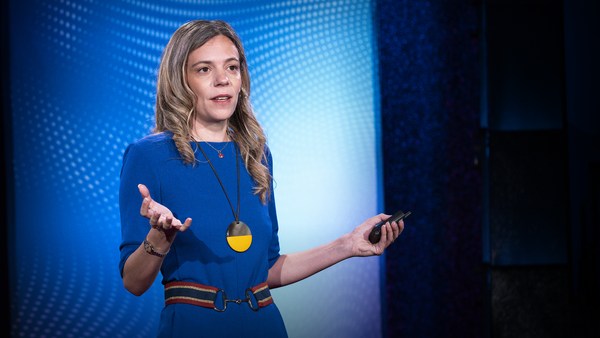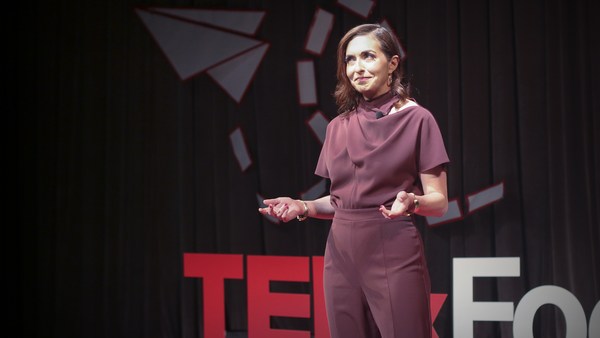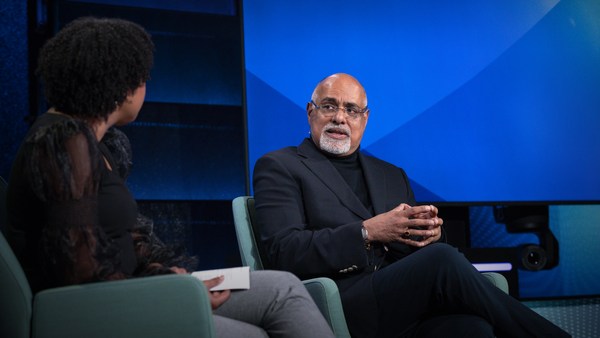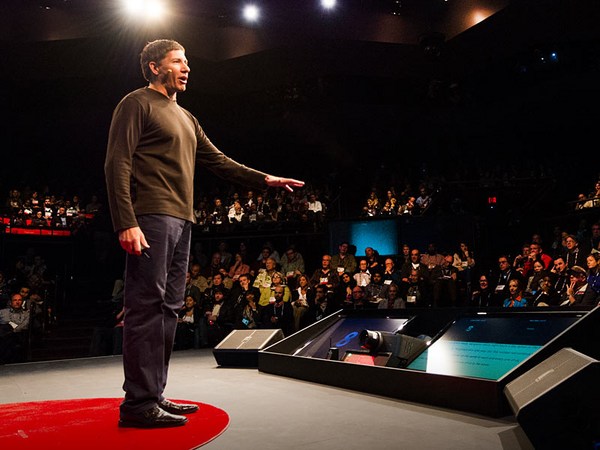I want to see a show of hands. How many of you have ever deleted an email or a social media request because it was written like pure spam? Yeah, or maybe you deleted it because they got your name wrong. Or they used an awful cliché, like "we share mutual interests," but never took the time to tell you what those were?
I remember, a long time ago, I sent an email to a business acquaintance of mine. I was hoping to draw them into my network and maybe get some feedback. And so I work hard on it, and I send it off. And to my surprise, instead of emailing me back, they sent me a text message. Awesome. It worked. Turns out it was not so awesome. The text message was to ask me why I sent them a mass message instead of a personal one. Needless to say, I was embarrassed, but at least I got that second chance via text message.
Things have evolved a lot since then, and I'll start by telling you this. Today's version of networking has changed. We once had classes on etiquette. And then, my parents' generation, and probably many of you, got literal instructions on how to shake hands and make eye contact. And then, the internet blew up, and now, there is no instruction at all. The skills that once served us well in conference rooms and at networking events are no longer enough. Now our networks span the globe. Today, we have over five billion internet and social media users, respectively, around the world, most of us accessing our digital identities through the device that you either have in your hand right now or close enough. But this is great, because what this means is that we can reach almost anyone, anywhere, instantly.
And now, I won't make you raise your hand for this next one, but is it possible you might still change jobs one day? If so, you should know that the vast majority of job placements are now happening through networking. They're happening through personal and professional connections. And so what do we do with this? Well, first, this is not a talk about you becoming an influencer. Meaningful online connection is not about how many followers you have or what you look like. Yet ignoring the power of connecting online, that's not just outdated, it's a significant missed opportunity. And what we need is a new playbook.
Now making up for my bad email days, I have since made a career out of connecting people online around the world and drawing from a wealth of global interactions, I've distilled for you six ways to make better connections online, beginning right now.
Tip number one: Connect, don’t collect. We’re in an era where scrolling can feel like connecting and where we often overlook the fact that building a helpful community for ourselves is not a numbers game. Rather, it's based on the quality and the depth of our relationships. Think of the common Pareto principle, where 20 percent of our connections yield 80 percent of the results. But for this to work, we have to know why we're reaching out. Have a goal, and do your homework. A strong first impression comes from stronger preparation.
Take this message from Tali, for example. She was looking for a remote job in community building and identified me as someone who could help her. But rather than jump right in, Tali did her research on what mattered to me, and then she tailored her outreach authentically. This worked, and I ended up getting on a call with her. What also can work is sharing what you liked about a recent presentation they gave or an article they wrote as a way of showing genuine interest. And you can use AI and large language models as a way of doing efficient research for you -- just remember, it's a tool for personalization, not a silver bullet.
Tip number two: don’t make it about you. Dale Carnegie famously said, "You can make more friends in two months by being interested in other people than you can in two years by trying to get other people interested in you." Think about that for a minute. When you receive a message, you want to feel like you're the ideal recipient for that message, not just one of many. So include a clear purpose, a call to action, and if you can, make that person feel special. Tali also did this very well in the second part of her message to me. She asked for a call about my career journey. So this is great for two reasons. First, she asked clearly for what she wanted -- the call. And second, she made it about my experience, which makes it really easy to say yes, because I don't need to prepare to talk about myself.
I hear complaints from friends all the time that get messages with no purpose. The message literally just says "Hello" or "I would like to connect," full stop. That's the whole message. Because the sender is thinking, "I'll get to the to the real point once they respond." Don't do this. With no compelling reason for that person to reply, it's likely you won't get that second chance.
Tip number three: become a familiar face. A few years ago, I discovered a woman online named Anna. Anna had created a community globally for women in tech. This is a topic that I'm personally very passionate about, and at the time, I was looking to take my experience from a local to a global level of support. And so I started to comment on Anna's posts, hoping she would recognize who I was. Eventually, when I reached out to offer my expertise as an emcee, Anna was happy to connect. She had recognized me, and since that call, I now host their annual conference, introducing top executives from companies like Google, Meta and Microsoft. In order to boost your visibility and those chances of new connections, try to become a familiar face to the right people so you can go right to their content and engage with it like I did. Or you can join online communities, groups and forums, where you can share your expertise and identify some of those right people for you. And, when you can, tag people relevant to the discussion as well. When you're a connector, people start to think really highly of you, and they also begin to recommend you for opportunities in return. And remember, the goal of networking, even when it's online, is to avoid invisibility. Begin building these relationships now so that they're ready when you need them.
Tip number four: bring in-person online. Right now, we're in an era where your networking is not done when the event is. In fact, at that time, our connections are still very light. So we must follow up afterwards. And when we do, make sure to include specifics about what you bonded over or even just how you were standing in the coffee line when you met. And bonus tip -- take a picture at the event with them, and then send it after, as a way of solidifying that memory of who you are. Just like this one here, it does not have to be a perfect picture, but I'll tell you, I will not forget Zivile, and how we bonded over podcasting at a speaker retreat and took this picture while we were surrounded by deer. You can also take this a step further, or rather back. Before you go to a conference or a new city, start teeing up opportunities in advance, sending carefully crafted messages to people that you want to meet while you're there. I did this in Prague, where, before I left, I sent one well-crafted message to a then-stranger on LinkedIn, and it landed me speaking at the Czechia Chamber of Commerce, and a great local tour guide as well. Just remember those tips one and two -- do your research first, and then share how you can help them while you're in town.
Tip number five: lose the emojis and be thoughtful. Listen, I know sending off a quick emoji response is temptingly easy. I have to stop myself from doing it too, I get it. Or we get a new connection request, and right away, when it comes through, we're thinking, "OK, now I can sell to them, ask for something, take." OK, slow it down. Let's think of it this way. Online conversation is like playing digital tennis. If we just smack the ball over the net without aiming, we're likely to miss the mark. But if we really stop and position ourselves to try and understand where our partner is coming from, we can serve back something meaningful -- a thought, a question or even well-timed feedback. The art of conversation thrives on back and forth, not just back. So next time you’re tempted to jump right in with your needs or to just shoot off a quick emoji reaction, ask yourself, "Did I give them something they can return?" Tip number six: follow up or fail. In Keith Ferrazzi's book "Never Eat Alone," we learned that 80 percent of building and maintaining relationships is simply staying in touch. We can do this easily. Send a quick DM, a text message, an email or be generous online. So follow, retweet, comment, share ... Or take a talk like this one, for example. Do you know someone who could benefit from tips like these ones? Share helpful resources with people in your network, as a way of saying, "I'm thinking of you," but with something that's practical and supportive. And I will say this slowly, as it is paramount. The worst thing you can do is not respond when someone has connected with you or answered your questions. We must say "thank you" and close off the conversation for the time being. This way, there's space to come back and open up that relationship again, down the road. And finally, the key is to just start. Remember, we all come from the same place, naked and with no connections.
(Laughter)
And like us, they're just people, on the other side of that screen. And the more that we craft strong outreach and we get a positive response, the easier that it becomes and the more exciting it becomes, too, as our communities grow and the opportunities along with it.
So let's do this. Think of someone you’ve been wanting to connect with. Someone who can help you achieve your goals. Someone who can give you the critical feedback that you’ve been looking for. Or maybe just that person you’ve been meaning to follow up with. Think of only one. I challenge you, reach out to that person today. You're ready to make meaningful connections online right now.
Thank you.
(Cheers and applause)



